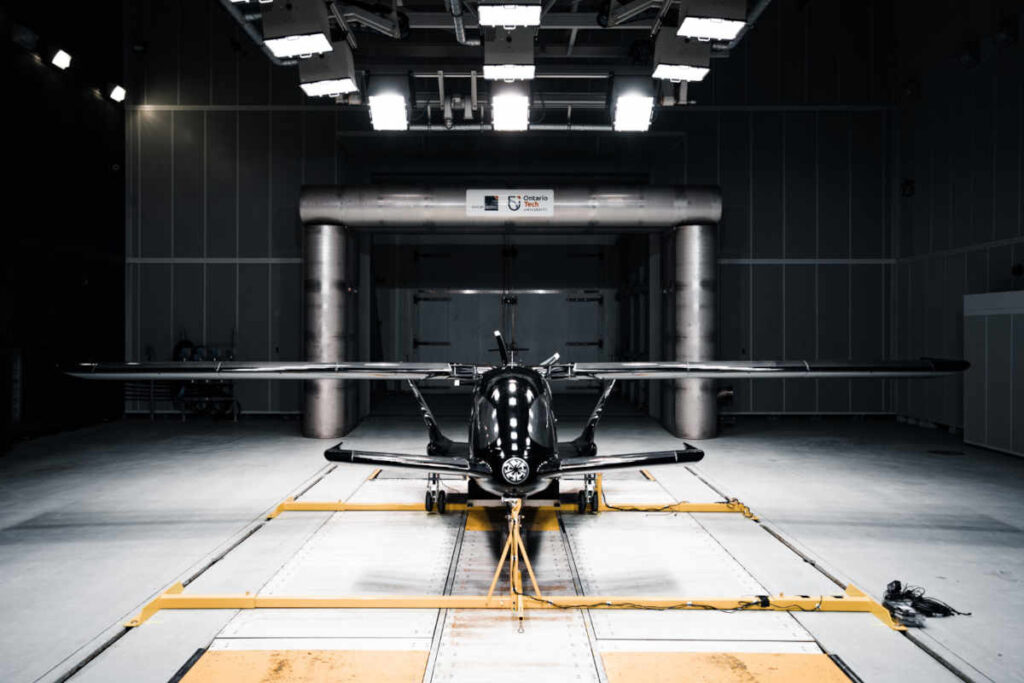
Features
eVTOL
Horizon completes Cavorite X5 wind tunnel transition flight testing
April 5, 2023 By Wings Staff
 Horizon’s Cavorite X5 was tested in the ACE Climatic Wind Tunnel. (Photo: Horizon Aircraft)
Horizon’s Cavorite X5 was tested in the ACE Climatic Wind Tunnel. (Photo: Horizon Aircraft) Horizon Aircraft successfully completed initial transition flight testing of its Cavorite X5 prototype, at 50 per cent scale, in the ACE Climatic Wind Tunnel. Cavorite X5 is being designed as a hybrid electric Vertical Take-off and Landing (VTOL) aircraft.
“Aircraft performance exceeded our expectation,” said Brandon Robinson, CEO of Horizon Aircraft. “We explored forward speeds of up to almost 100 kilometres per hour, measuring aerodynamic forces, control authority, and mechanical system function with the wings open at varying fan speeds.
“We were particularly happy with pitch and roll stability and control throughout the entire transition envelope, as well as the embedded fan performance,” continued Robinson. “Having real-world test results match our detailed predictions was further endorsement of our world class engineering. We can now use these results to refine our CFD modeling and further de-risk the outdoor transition flight test program that is beginning soon.”
Horizon explains its patented hybrid eVTOL concept allows the aircraft to fly 98 per cent of its mission in a very low-drag configuration like a traditional aircraft and is one of the only eVTOL aircraft currently able to do so. The company notes flying most of the mission as a normal aircraft is safer, more efficient and will be easier to certify than radical new eVTOL designs.
The Cavorite X5 can also operate in Short Takeoff and Landing (STOL) or Conventional Takeoff and Landing (CTOL) modes. The full-scale aircraft will be powered by a hybrid electric architecture that can recharge the battery array in-flight while providing additional system redundancy and flexibility.
Horizon Aircraft will move to outdoor transition flight testing shortly as it continues the design of a full-scale aircraft, anticipating final assembly for flight testing in 2025.